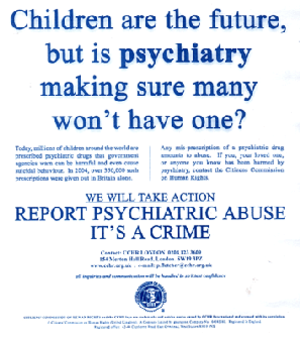For a while now, the PR arm of the Church of Scientology has abandoned attempts to convince the world at large that it means well. Apart from those admittedly delicious lookin TV spots earlier in the year, all energy seems to be directed towards not losing yet more members. The much-quoted expansion figures, previously dismantled on the Beacon and elsewhere, came not from a widely picked up press release, but from an internal magazine. CoS was not attempting to dissuade the world that Scientology is dwindling, it was attempting to paint a rosier picture for those left behind who were perhaps wondering why their org is so quiet.
Now, with legal cases in France, Australia and Belgium, continuing allegations about the violence at the heart of the church, a parade of high-ranking whistle-blowers, and the church's public exposure of parishioners personal files, members might be beginning to wonder exactly what kind of beast it is that they've signed up for. Grahame has posted a shocking link to a story about what Volunteer Ministers are doing in Samoa. We've heard stories before of how the VMs will visit disaster-struck countries in order to help with the relief effort; handing out Um Bongo to fire-fighters, that sort of thing. Some will even discuss VMs training medical professionals in their own brand of hands on healing "touch assists".
It seems that their usual level of reserve, however, has been abandoned. Now VMs are openly admitting that they find people who have been traumatised by disaster and teach them Dianetics. In an attempt to quell the criticism being levelled at the Church in Australia, they believe that demonstrating how they target people in crisis in order to promote their religion is something worth shouting about. So do we! This is not something that is going to win support from outside the Church, if anything it confirms what people may hitherto only suspect; the only benefit is to repair some of the damage the brand has sustained in the eyes of scientologists, and allow the Church to keep its hooks in its existing parishioners.
Mark Fisher has suggested that Miscavige has set up a task force to re-recruit departed members, which also makes it plain that the Church is struggling to maintain its paying customers. In the past, apostates would be disconnected, written off as lost causes, something the Church could afford to do because there was always fresh meat to be had. With over a year of Anonymous protests, the worst press the Church has had in decades, high profile defections, unwitting admissions of dodgy practices, and more, the "bodies" are now more innoculated against Hubbard's trap than they have ever been, and it is the best that Miscavige can do to stop the bubble bursting.

